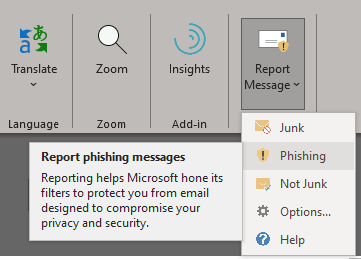Information Services has been alerted to an increase in phishing emails targeting colleges and universities across Scotland. These emails contain links to a website asking you to enter your University email address and password with an intent to steal your information. These phishing emails are often crafted using fraudulent information related to Covid-19 prevention measures or academic research.
We urge everyone to be mindful when reading emails, messages or texts. Here are few warning signs which can help you detect phishing and other scams:
- Emails pretending to be from the University (or another organisation) that come from a public email domain such as “@gmail.com” or “@outlook.com” – most legitimate organisations will have their own email domain and company address.
- Any unusual contact details. Always inspect both the email address and name displayed next to it and check if they match.
- Impersonal greetings at the start of the message such as “Hello” or “Hi” without naming you directly.
- Grammatical and spelling errors.
- An unusual sense of urgency or call to action (for example, “you must click on this link NOW to register to keep your account” or “you must pay a fine to receive a package”).
Please remember that the University will never contact you from an unofficial email address, and we will never ask you to confirm your email address and password via a link in an email.
If you spot a suspicious email, please report it immediately using the ‘Report Message’ function in Outlook. You will find this in the ribbon (menu) along the top of the screen. The message will be forwarded to our security team as well as Microsoft for investigation.

If you have clicked on any suspicious links and entered your details recently, it is best to change your password as a precaution. You can do this by clicking on the “change password” link in the top left-hand corner of the Portal underneath your user details.
If in doubt, you can always forward the email or contact the Information Centre for advice.
